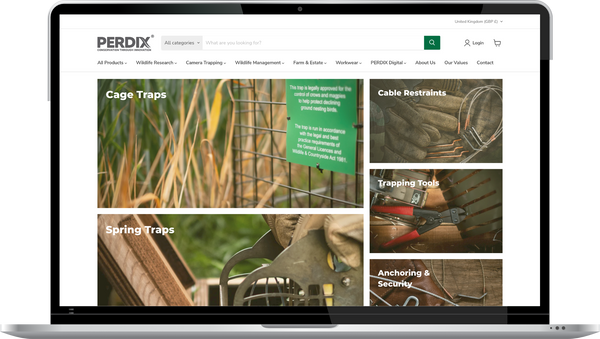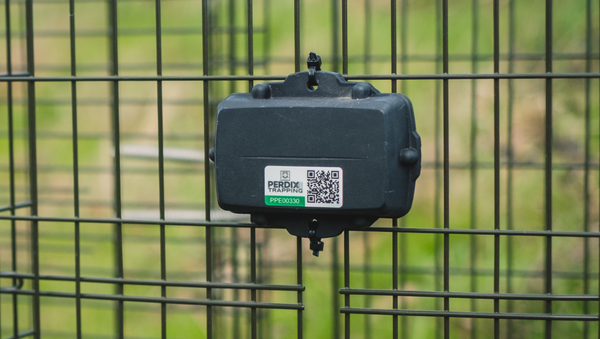
Rat control - the conservation conundrum
It has recently been announced that rat poisons face new restrictions as use of second-generation anticoagulant rodenticides (SGARs) bromadiolone and difenacoum away from buildings is being withdrawn by the UK’s Health & Safety Executive (HSE) in 2024. So anyone needing to control rats outside in the UK, for example those with a remit to conserve wildlife, must now turn to alternative methods.
Numbers of barn owls with rodenticide residues have remained stubbornly high at around 80% of barn owls tested, prompting decisive action against SGARs. Sales of products containing bromadiolone and difenacoum for use in open areas and at waste dumps will cease on 4 July 2024. Any such products purchased on or before that date will be authorised for use in open areas and waste dumps until 31 December 2024. After that, it will be illegal to use any SGAR product to treat a rodent infestation not associated with a building.
As any wildlife warden or gamekeeper will tell you, rats can be a major detriment to successful nesting and fledging of chicks, particularly of ground-nesting birds. Birds especially vulnerable to nest predation are those of the wader family (curlew, lapwings, golden plover, redshank, woodcock, snipe, etc), terns and gamebirds (grey partridges, pheasants, red-legged partridges and grouse). It is therefore no surprise that on areas with effective predator control, ground-nesting birds stand a much higher chance of survival.
Spring and early summer is when these birds are firstly sitting on eggs, and then feeding their chicks. The young chicks are at an acutely vulnerable stage before they fledge and so this is a critical time for rat control.
Without being able to use poisons outside, what can be done? Although poisons can be effective in an around buildings, out in the countryside where these birds nest, poison has been ill-advised anyway because of the secondary poisoning of barn owls and other birds of prey which eat the poisoned rats, which has long been known and is well documented. Perdix has never sold rodenticides for precisely these reasons.
Most rat controllers are already using a system of integrated pest management (IPM) including reducing places where rats can nest, removing access to food and water; using lethal non-anticoagulant baits; and a lethal regime of trapping and shooting.
On farmland, rat numbers can build quickly, particularly around feeders used to provide supplemental food for game birds and other farmland birds during winter and early spring. Careful design, selection and placement of standard or automatic Farmland Bird Feeders can very much help to prevent this. In this area, Perdix has spent many years investigating and developing improved feeder designs to prevent rats (and other pests) from feeding from them. This reduces build-up in the first place and therefore reduces the need for lethal control practices to be put in place. We’ll keep you posted on how this work progresses.
Where rats are a problem, trapping is the most used rat control method adopted by conservationists, and Perdix comes to the fore on this. Perdix has a range of humane and powerful instant-kill rat traps and live-capture cage rat traps starting from a few pounds each. From the ever trusty Victor snap rat trap to the bespoke-designed and tested powerful Perdix Spring Trap. Koro spring traps and DoC spring traps are also popular with professional practitioners. All humane kill traps sold by Perdix are designed for outdoor use in conservation and wildlife management scenarios. A range of trapping tunnels and excluders, also available from Perdix, encourage rats into the trap while helping to prevent non-target captures. Perdix also supplies a whole range of trapping equipment accessories including ground anchors, tools, locks, ID tags and safety labels and signs.

As a result of the upcoming changes in rodenticide use, Perdix is already discussing new multi-catch rat trap designs with gamekeepers and other wildlife professionals to meet their ongoing requirements. All new trap designs will have the ability to be used in conjunction with the PerdixPro remote monitoring system which provides users with a secure portal and app. One tool on the system, PerdixPro Trapping, has the ability to monitor kill and live-capture traps remotely via our trap tags to improve animal welfare, trapping efficacy and economics. It can also be used with manual record keeping. We are excited to be launching a number of new digital products for wildlife managers soon. To stay up to date, please check our blogs regularly.


